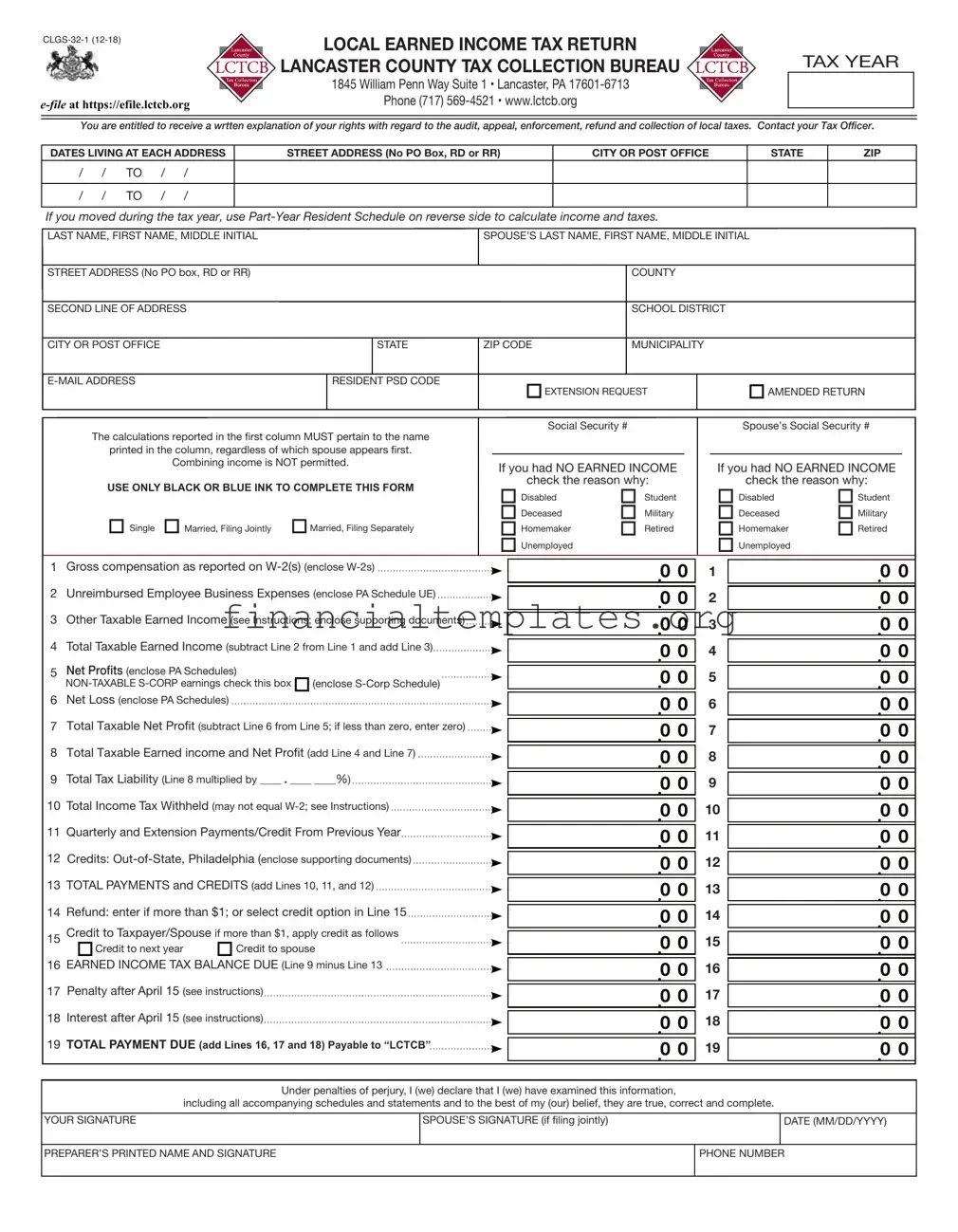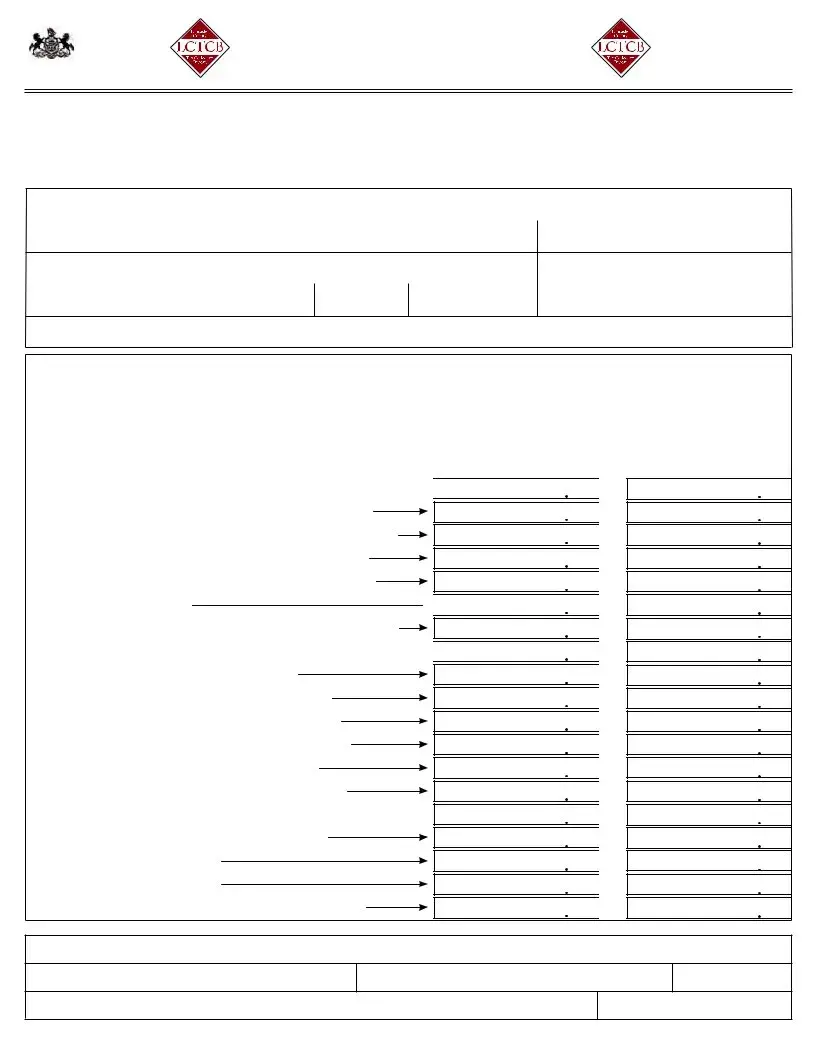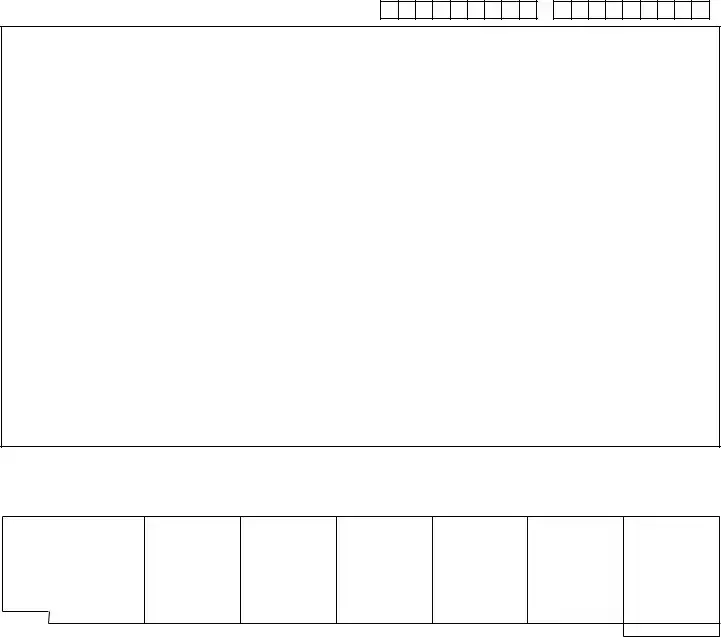The Internal Revenue Service (IRS) Form 1040, U.S. Individual Income Tax Return, shares similarities with the Local Earned Income Tax Return Lancaster County form, primarily in its purpose of reporting annual income and calculating taxes owed or refunds due. Both forms require detailed income information, including wages, salaries, and potentially business income, and allow for deductions and credits. Each form is structured to guide taxpayers through the tax reporting process, offering sections for personal identification, income details, and tax computation. However, the IRS Form 1040 caters to federal tax obligations, whereas the Local Earned Income Tax Return focuses on local (municipal) tax responsibilities.
Pennsylvania State Tax Return Form PA-40 plays a similar role at the state level to what the Lancaster form does at the local level. Both documents are designed to collect income data and calculate taxes owed to their respective authorities. They request taxpayer information, income breakdowns, and allow for various deductions and credits specific to each jurisdiction. The PA-40 form, however, is tailored to meet the state's tax laws and requirements, including state tax rates, which differ from local tax considerations outlined in the Lancaster form.
The Quarterly Estimated Tax Payment form, commonly used by self-employed individuals or those with additional sources of income not subject to withholding, resembles the Lancaster form in its forward-looking approach to tax payments. It requires an estimation of income and subsequent tax owed for the current year, much like parts of the Lancaster form that might be used by taxpayers to report and pay anticipated taxes on non-withheld earnings. The key difference lies in the frequency and purpose of filing; the estimated tax form is filed quarterly to cover ongoing income, whereas the Lancaster form is an annual settlement of local earned income tax.
The W-2 Form, or Wage and Tax Statement, although not a tax return form, provides critical information that feeds into the Lancaster form. It details an employee's annual wages and the amount of taxes withheld from their paycheck, information which is essential for accurately completing the Lancaster form's sections on gross compensation and income tax withheld. While the W-2 is an informative document provided by employers, the Lancaster form uses this information to determine the tax liability or refund at the local level.
The Local Services Tax (LST) form, required in some jurisdictions, also shares objectives with the Lancaster tax form, focusing on taxing individuals working within certain areas. Like the Lancaster form, it is geared towards local taxation but aims specifically at funding emergency services, road construction, and other community projects through a flat tax rate. Both forms require personal and employment information but serve different aspects of local tax collection, with the LST focusing more on the provision of public services.
The Unreimbursed Employee Business Expenses form (PA Schedule UE), required when taxpayers have work-related expenses not reimbursed by their employer, complements the Lancaster form. Taxpayers use it to itemize allowable expenses to reduce their taxable income, directly impacting the calculation of taxes on the Lancaster form. While the PA Schedule UE specifically addresses the deduction of work expenses, the Lancaster form incorporates these figures to adjust gross taxable income at the local level.
The Declaration of Estimated Tax for Individuals form is akin to the section of the Lancaster form that deals with quarterly and extension payments. It is for taxpayers who expect to owe tax beyond what is covered by withholding or other credits, providing a method to pay estimated taxes in advance. This parallels the Lancaster form’s provision for entering payments made throughout the tax year against estimated tax liability, ensuring compliance and helping manage cash flow related to tax obligations.
The Schedule for Passive or Unearned Income, somewhat mirrored by the S-Corporation section in the Lancaster form, is relevant for individuals who receive income from sources other than regular employment, such as dividends or rental properties. While specifically the S-Corporation report part of the Lancaster form focuses on earnings from S-Corps, it recognizes the need to account for varied income sources within the framework of local tax responsibilities, integrating these into the broader income reporting and tax calculation process.
Finally, the Amended Tax Return form, which taxpayers use to correct mistakes or omissions in previously filed returns, shares its corrective purpose with the option to file an amended return indicated on the Lancaster form. This option ensures accuracy in tax reporting and compliance, allowing individuals to rectify filing status, income, and deductions or credits, whether on a federal, state, or local level, thereby ensuring that taxpayers meet their obligations accurately.









